On message strategy and more.
On message strategy and more.
Controlled: One of the four principles of Message Strategy
Reminder: Message Strategy is a principled approach to what you say and how you say it — in order to achieve a goal. There are four principles: Customer-centric, clear, compelling, and controlled. AKA the 4Cs. AKA the four things that make a message work.
What does “controlled” mean in messaging?
A controlled message is consistent and compliant. That’s what it boils down to.
Compliance. If there was ever a word that connotes “no fun,” this is it. But let’s be grown-up here. If you don’t comply with the brand standards, your brand has no integrity. If you don’t comply with the strategy, you might as well not have one. And if you don’t comply with the law… well, you know. Of course, we love to break the rules in marketing and sales. That’s how you get exceptional work. But to a point, right? There’s being a rebel, and then there’s being a traitor.
Consistency? That’s no thrill, either. But what it gets you is this: something you can count on. Something your customers can count on.
Think of consistency not only as “consistent in” but also “consistent with.”
| Consistent in: | Consistent with: |
|---|---|
| Voice | The truth |
| Fonts | Best practices |
| Color palette | UI conventions |
| Image treatment | Core values |
| Customer experience | Standards of decency |
At this point, you’re noticing that consistent and compliant are pretty similar. Intertwined, even. According to Merriam-Webster, consistent means steady continuity, compatibility, conformity. And compliant means conforming to requirements.

Now, to be consistent and compliant, you’re going to have to uphold discipline.
Uphold.
Discipline.
Let’s have one more go at Merriam-Webster, and I promise you it’s worth it. These words have some rich meaning.
Discipline is:
• Control gained by enforcing obedience or order
• Orderly or prescribed conduct or pattern of behavior
Enforced order… prescribed behavior… How sweet that sounds. ’Cause I’m a control freak (cue my wife’s eye-roll). With diagnosed OCD. No wonder discipline is one of my favorite words.
Discipline is also:
• Training that corrects, molds, or perfects
• A field of study
• A rule or system of rules governing conduct or activity
So a controlled message has been corrected and perfected. That’s proofreading and checks and balances.
Field of study? Yes. We’re in the field of communications. There are industry standards, best practices, different specs and requirements for various media.
Now let’s look up “uphold.” I was surprised how powerful this verb is.
Uphold means:
• To give support to
• To support against an opponent
So controlling your message means supporting for discipline. You want to aid it. Encourage it. Champion it.
But support against an opponent? Who are your opponents? Your competitors, of course. But also, people who will sue you. People who will steal your ideas. So a controlled message is one that protects your business and minimizes risk.
I especially love uphold’s definition #2:
• To keep elevated
• To lift up
This is so positive. By exercising control, you raise your message to the highest standards. Make it the best it can be.
It’s funny, when I think about the word “uphold,” I can’t help but think about “hold up.” Because keeping a message under control inevitably involves holdups. Like “Hold up! We forgot to change the phone number.” Or “Hold please, I need to check with legal.” Or “Hold on, don’t send these out yet. They’re the wrong color.”
Nobody likes being held up. Especially when deadlines are involved. But skirting the inconveniences is how bad things happen. You have to be willing to be the bad guy to keep your message under control.
Definitions of control
American Heritage:
• To exercise authoritative influence over; direct
• To adjust to a requirement; regulate
• To hold in restraint; check
Why should a message be controlled?
When a message is controlled (consistent), it says the same things, the same way, time after time. It’s predictable — in a good way. It doesn’t frustrate folks with conflicting information.
A consistent message is a reliable message. And a reliable message is a message you can trust. (Brand trust matters, right?)
A controlled message (compliant) doesn’t flout rules or go off the deep end. Wild overpromises? Law-bending claims? No sir. Discipline helps you mitigate risk for the business.
You remember the Absolut vodka campaign that ran for so many years? It’s famous for its consistency. It made that brand unmistakable. You want your brand to be recognizable, don’t you?
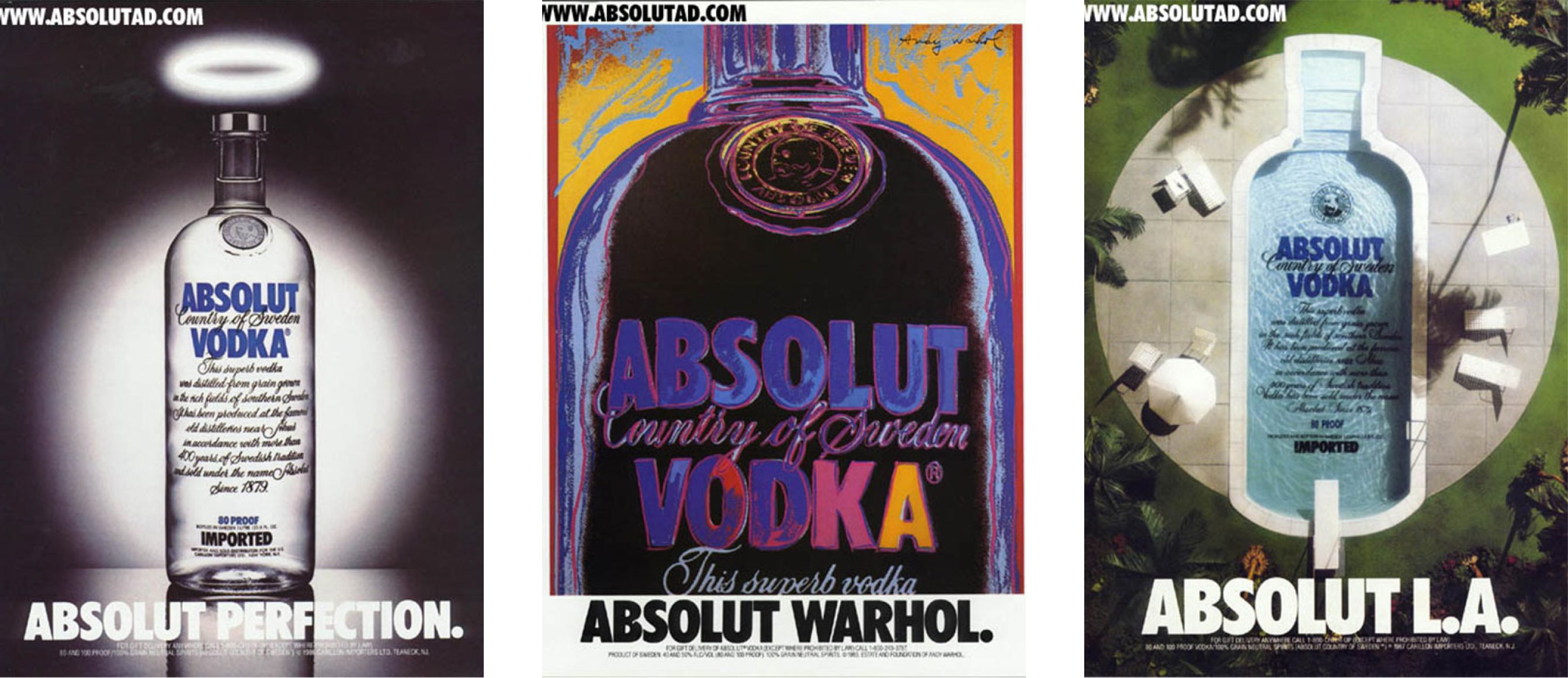 Source: vinepair.com
Source: vinepair.com
Most important, a controlled message helps a business achieve its goals. The whole reason you have message strategy is to help you achieve a goal.
Benefits and advantages of a controlled message
A controlled message:
• Prevents confusion
• Builds trust and credibility
• Minimalizes risk
• Improves recognition
• Meets goals
What makes a message controlled?
I was blessed to get my start in the advertising business during the BC era — Before Computers. (On the design side, at least.) Back then — and even in the early days of Counterpart — we physically routed work for internal review. (Anybody remember job jackets?) We had “routing slips” — little checklists that we would staple to a copy document or printed layout. One at a time, team members would review the work, then sign off — literally. You inscribed your initials, so as to say “I certify that this is done correctly.” Or that you had changes or whatever. Obviously this process is outdated, but those ol’ routing slips are a nice visual representation of control.
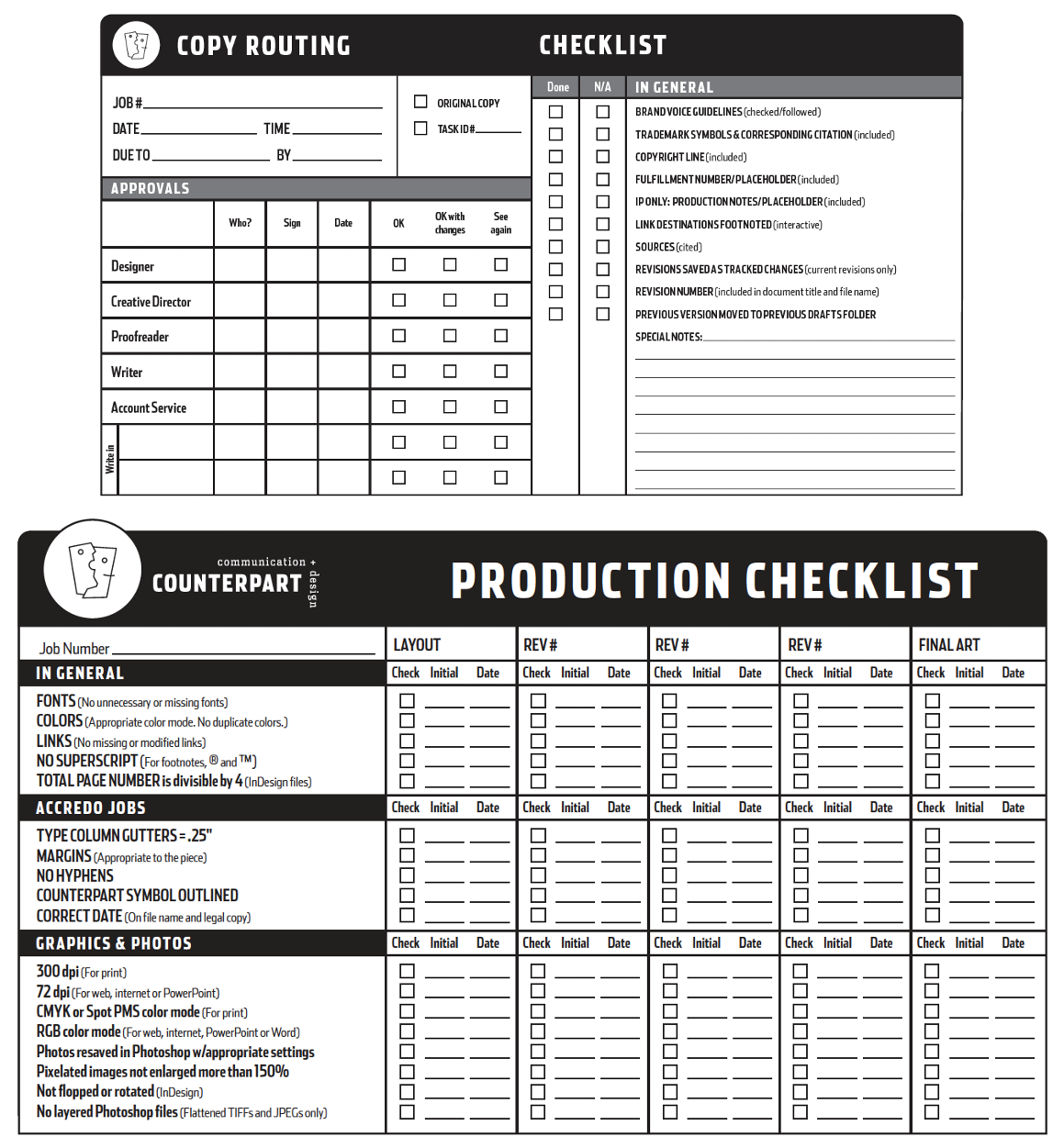
To keep messaging controlled, you need four things: standards, communication, vigilance, and accountability. After all, standards might as well not exist if they’re not communicated (regularly), watched out for, and backed by consequences if they’re not adhered to.
To keep messaging controlled:
• Standards
• Communication
• Vigilance
• Accountability
Standards set the baseline by which all things must be judged. The basic ones are:
• Accurate
• Compliant
• Protected
• Branded
• Consistent
Accurate means no mistakes. Like, the correct item number. Correct pricing. And correct contact info. (Once upon a time there was an agency — where I may or may not have worked. They didn’t double-check an 800 number before going to production. Turned out, it was a phone-sex line. So watch out because yes, phone-sex lines still exist. I Googled it.)
Of course accuracy also means correct spelling and grammar. No, you’re not in English class anymore. But your customers will wonder: If you’re careless in copy, what else are you careless about?
Compliance is what it is. Just do it. Don’t pick a fight with a lawyer.
Speaking of, our legal friends also provide us with trademark, copyright, and patent citations. A controlled message protects intellectual property — arguably a company’s most valuable asset.
Branded? Every brand owes its existence to control. That’s why every brand has guidelines. (You do have brand guidelines, don’t you? If not, call us NOW.)
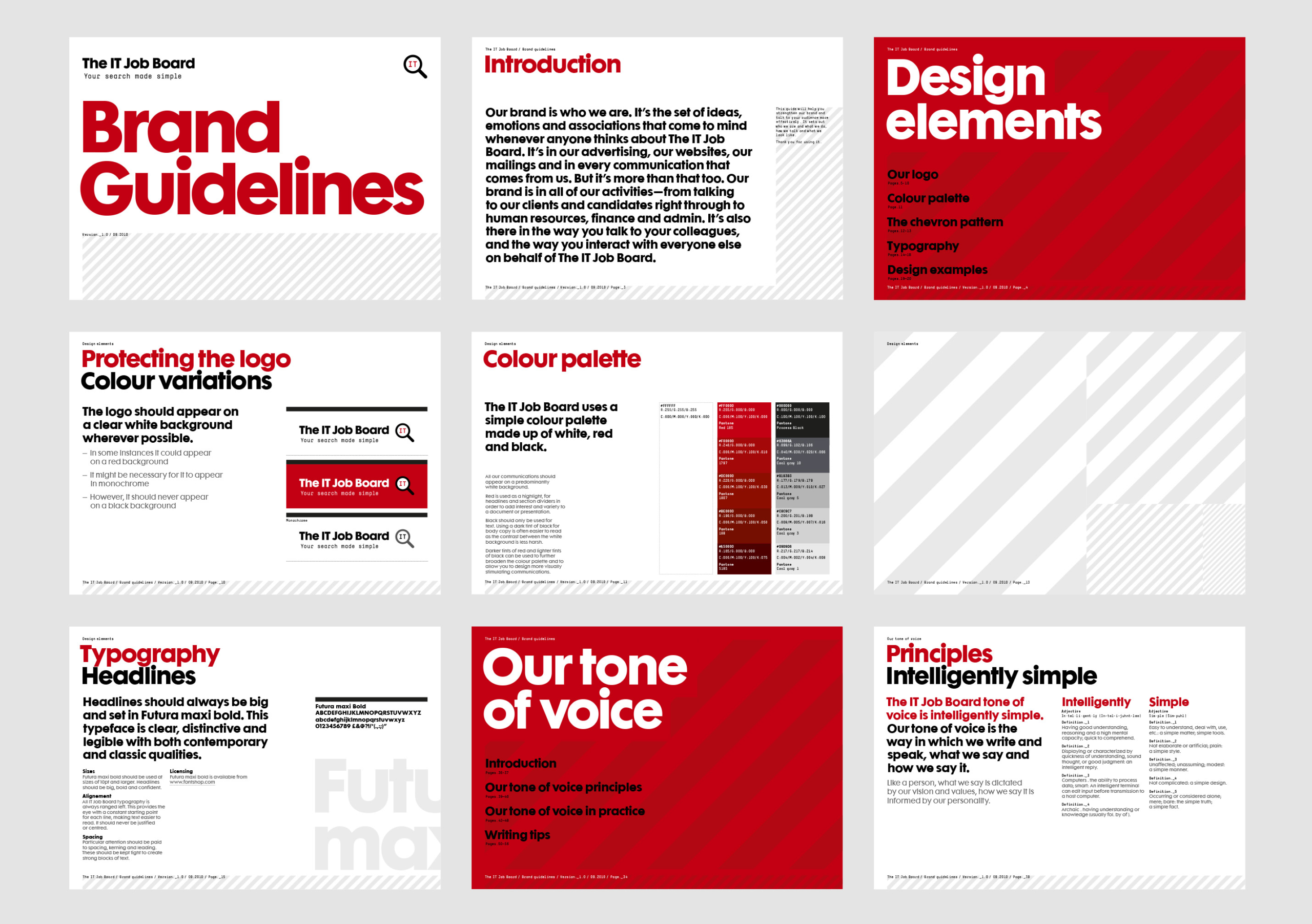 Source: raggededge.com
Source: raggededge.com
Finally, consistency. It’s not a hobgoblin. It’s a cornerstone of trust.
If you’re a distributor with a big sales force, you know firsthand the challenge of keeping your message controlled. We’ll always have those sales reps who want to do their own thing. Good intentions, of course. To lessen the problem, probe for reasons why. Then respond with plenty of ready-to-use, easy-to-adapt sales tools and materials, pre-approved for look and feel.
Learn about nine traits of a controlled message in our separate blog post.
Verbally controlled
 Source: styleguide.mailchimp.com
Source: styleguide.mailchimp.com
Be careful what you say. I don’t mean be scared. Just be disciplined.
Truth in advertising? You’d better make sure of it. Because Uncle Sam is watching.
Verify stats. Test that CTA. And for heaven’s sake, make sure you can support your claims. Don’t get slapped with a class-action.
Is your copy on-brand? Brand voice guidelines aren’t nearly as common as visual guidelines. But it’s a good idea to have them.
Got legalese? Get it in there. Personally I prefer handling it straight-up in the copy if possible. Nobody is fine with fine print. Besides, asterisks just stoke suspicion and distrust.
Get yourself a good proofreader. A human, I mean. AI keeps getting better, but your experience with dictation, spell-check and autocorrect tells you: Missed steaks steel happen.
Verbal ways to be controlled:
• Fact-check.
• Follow brand guidelines.
• Include legalese.
• Proofread.
Visually controlled
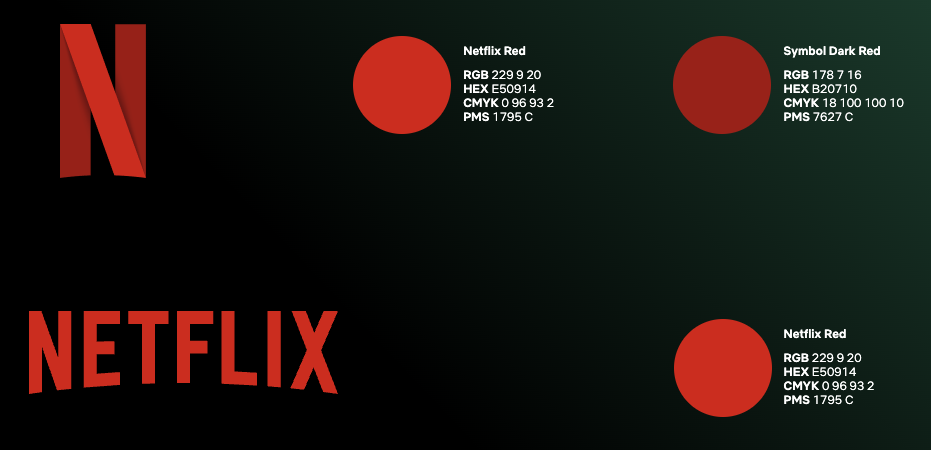 Source: brand.netflix.com
Source: brand.netflix.com
The visual list is pretty much the same as the verbal one. Brand. Legal. And extra sets of eyes.
Visual ways to be controlled:
• Follow brand guidelines.
• Include legalese.
• Proofread.
This old campaign we created for Travelennium is a good example of controlled. Notice how the design is consistent and recognizable. The arc and colors reflect the logo and brand.

Are there more ways to keep a message controlled?
No question. Most of the above are explicit ways. But there are also esoteric ways. And there are exceptions. More on this in a future blog post.
Controlled messages: Further reading and inspiration
Want to learn more about keeping your message controlled? Check out these standout works.
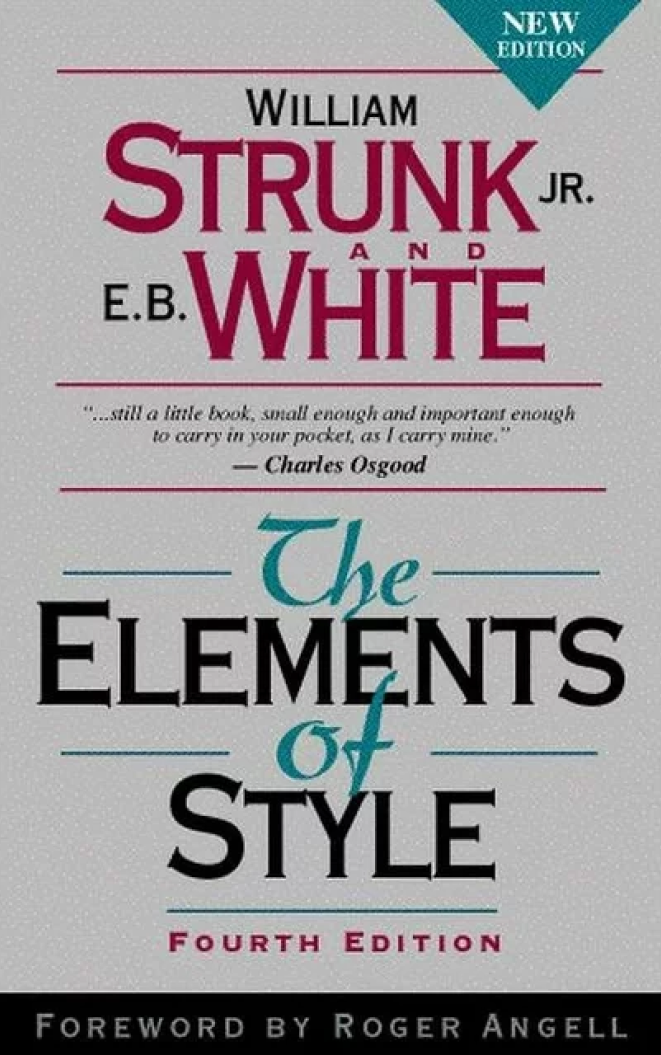 Source: walmart.com
Source: walmart.com
 Source: chrischow.github.io
Source: chrischow.github.io
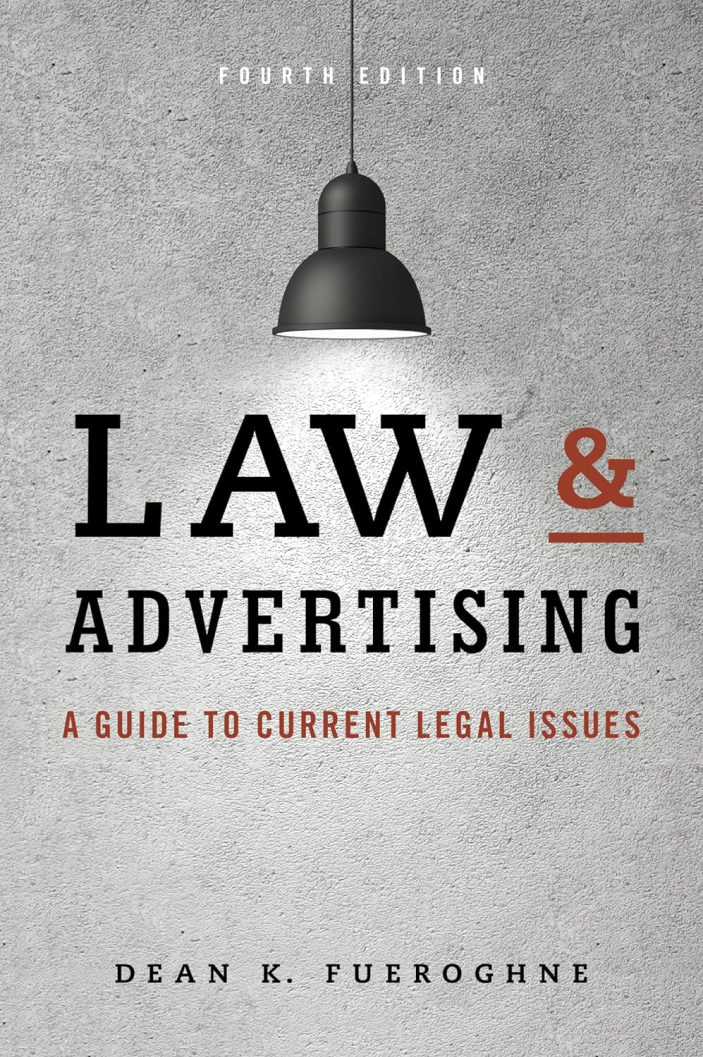 Source: amazon.com
Source: amazon.com
“Accuracy is the twin brother of honesty; inaccuracy, of dishonesty.”
— Nathaniel Hawthorne
Weigh in: Controlled as a principle of Message Strategy
Your input can help us refine the principles of Message Strategy, so we in turn can help others.
Being compelling is a big part of what makes a message effective. Do you agree or disagree with our assertions? Hit us with your cheers and challenges.
Ready to prove or disprove the controlled principle? Send us some examples.
Put controlled messaging into practice
Are you creating sales playbooks? An ad campaign? A tagline? How would you rate your own messaging in terms of being controlled? Help yourself to our free assessment.
Need to ensure adoption of your sales program, new product offering, or company strategy? Let’s talk.
Related:
Message strategy: An official definition
How to make your message customer-centric
How to make your message clear
How to make your message compelling
Is your brand communication out of control?




